Balkinization
an unanticipated consequence of
Jack M. Balkin
Balkinization Symposiums: A Continuing List
E-mail:
Jack Balkin:
jackbalkin at yahoo.com
Bruce Ackerman
bruce.ackerman at yale.edu
Ian Ayres
ian.ayres at yale.edu
Corey Brettschneider
corey_brettschneider at brown.edu
Mary Dudziak
mary.l.dudziak at emory.edu
Joey Fishkin
joey.fishkin at gmail.com
Heather Gerken heather.gerken at yale.edu
Abbe Gluck abbe.gluck at yale.edu
Mark Graber
mgraber at law.umaryland.edu
Stephen Griffin
sgriffin at tulane.edu
Jonathan Hafetz
jonathan.hafetz at shu.edu
Jeremy Kessler
jkessler at law.columbia.edu
Andrew Koppelman
akoppelman at law.northwestern.edu
Marty Lederman
msl46 at law.georgetown.edu
Sanford Levinson
slevinson at law.utexas.edu
David Luban
david.luban at gmail.com
Gerard Magliocca
gmaglioc at iupui.edu
Jason Mazzone
mazzonej at illinois.edu
Linda McClain
lmcclain at bu.edu
John Mikhail
mikhail at law.georgetown.edu
Frank Pasquale
pasquale.frank at gmail.com
Nate Persily
npersily at gmail.com
Michael Stokes Paulsen
michaelstokespaulsen at gmail.com
Deborah Pearlstein
dpearlst at yu.edu
Rick Pildes
rick.pildes at nyu.edu
David Pozen
dpozen at law.columbia.edu
Richard Primus
raprimus at umich.edu
K. Sabeel Rahmansabeel.rahman at brooklaw.edu
Alice Ristroph
alice.ristroph at shu.edu
Neil Siegel
siegel at law.duke.edu
David Super
david.super at law.georgetown.edu
Brian Tamanaha
btamanaha at wulaw.wustl.edu
Nelson Tebbe
nelson.tebbe at brooklaw.edu
Mark Tushnet
mtushnet at law.harvard.edu
Adam Winkler
winkler at ucla.edu
Compendium of posts on Hobby Lobby and related cases
The Anti-Torture Memos: Balkinization Posts on Torture, Interrogation, Detention, War Powers, and OLC
The Anti-Torture Memos (arranged by topic)
Recent Posts
Obergefell, Fisher, and the Inversion of Tiers
Just A Few Blogs
ACS Blog
Alas, a Blog
Althouse
Arts and Letters Daily
Atrios (Eschaton)
Bill of Health
Buzzflash.com
Buzz Machine
Cato at Liberty
Juan Cole (Informed Comment)
Concurring Opinions
The Constitution in 2020
Corrente
Crooked Timber
Daily Howler
Daily Kos
Dana Boyd
Brad DeLong
Digby (Hullabaloo)
Discriminations
Daniel Drezner
Kevin Drum (Mother Jones)
Electrolite
En Banc
Eunomia (Daniel Larison)
Fafblog
Michael Froomkin (Discourse.net)
GovLab (Beth Noveck)
Rick Hasen (Election Law)
History News Network
How Appealing
Ignatz (Sam Heldman)
The Importance of (Ernie Miller)
Infolaw
Instapundit
International Economic Law and Policy Blog
IntLawGrrls
Jacob Levy
Jesus' General
Jurisdynamics
The Kitchen Cabinet
Mark Kleiman
Law Blog Central
Larry Lessig
Lawyers, Guns and Money
Liberal Oasis
Brian Leiter's Law School Reports
The Leiter Reports
Marginal Revolution
Megan McArdle
Memeorandum
Metafilter
Mirror of Justice
The New Republic
Newseum
No More Mister Nice Blog
Brendan Nyhan
Opinio Juris
Orcinus
The Originalism Blog
Pandagon
Passport (Foreign Policy)
Overcoming Bias
Political Animal (Washington Monthly)
Political Theory Daily Review
Political Wire (Taegan Goddard)
The Poor Man
Virginia Postrel
Prawfsblawg
Public Reason
Jonathan Rauch
Raw Story
Redstate
ReligiousLeftLaw.com
Reporters Committee For Freedom of the Press
Reproductive Rights Blog
Rothman's Roadmap to the Right of Publicity
SCOTUS Blog
Seeing the Forest
Clay Shirky
The Shifted Librarian
The Situationist
Larry Solum (Legal Theory)
Andrew Sullivan
Talking Points Memo
Talk Left
Tapped
Tbogg
TechPresident
The Paper Chase (Jurist)
Tom Paine
Tom Tomorrow (This Modern World)
Eve Tushnet
Uggabugga
University of Chicago Law School Faculty Blog
Unqualified Offerings
The Volokh Conspiracy
War and Piece (Laura Rozen)
Wampum
Oliver Willis
Wonkette
Written Description
Matthew Yglesias
Yin
Your Choice of Feeds
1. XML
powered by
2. Atom Feed
3. RSS 2.0
Obergefell, Fisher, and the Inversion of Tiers
Guest Blogger
Maxwell L. Stearns*
My new article, “Obergefell, Fisher, and the Inversion of Tiers,” is forthcoming in the University of Pennsylvania Journal of Constitutional Law. It provides a comprehensive framework that explains the pervasive doctrinal anomalies associated with the tiers of scrutiny doctrines. It also offers a simpler path forward that would produce more consistent and predictable applications within the general framework of existing tiers. The Article does not recommend abandoning the tiers’ doctrines or replacing them with a single tier or a more finely grained menu of tiers. Instead, it demonstrates why a system of tiers approximating ours is an inevitable feature of our constitutional jurisprudence, and it explains how to avoid the doctrinal anomalies that have generated much-deserved critical commentary.
The tiers doctrine historically began with a binary division, rational basis or strict scrutiny. The former, a more relaxed standard, was the baseline, and the latter, a more stringent standard, required a justificatory trigger, typically a suspect class or a fundamental right. The later-introduced third tier, intermediate scrutiny, was principally developed for cases involving gender-based distinctions, and it has not been applied in a consistent manner. The most significant anomalies in the system of tiers involve applying strict scrutiny to sustain race-based affirmative action, and applying rational basis scrutiny to strike laws adversely affecting non-suspect (or quasi-suspect), yet politically vulnerable groups. The result has been to transform the once-binary scheme into a system with the following five categories:
(1) Rational Basis
(2) Rational Basis Plus
(3) Intermediate
(4) Strict Scrutiny Lite
(5) Strict Scrutiny
Lax review
Stringent review
Table 1: Tiers of Scrutiny in One Dimension
As a matter of black letter law, it is commonplace to express the tiers along a simple linear scale, as shown in Table 1, ranking the tiers from lax to stringent. In terms of predicting case outcomes, however, the Table 1 presentation fails. When the Court applies rational basis plus, it strikes the challenged law, and when it employs strict scrutiny lite, it sustains the challenged laws. In terms of prediction, therefore, strict scrutiny lite abuts traditional rational basis, with both used to sustain the challenged classification, and rational basis plus abuts strict scrutiny, with both used to strike down the challenged classification. On first principles, it is hard to imagine that anyone would devise our present inverted system of tiers, generating the sequence 14325, as reflected in Table 2. The analytical difficulty involves the failure to match the scheme of tiers with the underlying dimensionality of the case law.
(1) Rational Basis
(4) Strict Scrutiny Lite
(3) Intermediate
(2) Rational Basis Plus
(5) Strict Scrutiny
More likely to sustain
More likely to strike
Table 2: Tiers of Scrutiny Recast
Dimensions are normative scales of measurement used to evaluate virtually anything being compared. Some dimensions involve simple binaries—black versus white, male versus female—although such binaries oversimplify as applied to some individuals. Other dimensions present more nuanced scales of measurement, for example, continuous gradations of height or weight. Single dimensions often combine multiple criteria. Larger objects tend to be heavier, allowing us to rank modes of transportation—a scooter, a bicycle, a car—in a manner that captures both size and weight. And yet, such alignments sometimes break down. Adding an aloft hot air balloon—larger than a car yet lighter than a scooter—forces the need to split the dimensions of size (scooter, bicycle, car, then hot air balloon) and weight (hot air balloon then scooter, bicycle, car).
Advocates of an array of tiers, including former Justice Thurgood Marshall, fail to recognize that even a single dimension is capable of sorting infinite data provided the dimension captures the relevant normative stakes. And yet, even a small number of data will thwart a single dimension if that dimension fails to capture those stakes. Conversely, advocates of a single tier, such as retired Justice John Paul Stevens, fail to recognize that new descriptors along a single dimension, marking which laws are or are not permissible, will necessarily emerge. Because lower courts will come associate those articulated characteristics as bases for striking or sustaining challenged laws, the new terminology will, over time, replicate the system of tiers, albeit less guidance, at least until the system sorts itself out.
To illustrate, we can sort infinite integers along the odd/even dimension or along the prime/non-prime dimension. And yet, we need both dimensions—odd/even and prime/non-prime—to sort the deceptively simple sequence 2,3,4 when the two sets of criteria are combined. The number 2, the sole even prime, forces a split of these two dimensions, just as the hot air balloon forced a split over the dimensions of size and weight. By analogy, the inversion of tiers has arisen because the category of benign racial classifications is the hot air balloon (or number 2) in our equal protection jurisprudence. Benign racial preferences force a split in the dimensionality of tiers that the Supreme Court has refused to allow. The result has been to contort strict scrutiny to sustain the narrow set of relevant challenged laws, as seen in Regents of the University of California v. Bakke, 438 U.S. 265 (1978), and Grutter v. Bollinger, 539 U.S. 306 (2003). This is evident in Justice Kennedy’s ongoing critique in the still-pending litigation following Fisher v. Univ. of Texas at Austin, 133 S. Ct. 2411 (2013), of Justice O’Connor’s relaxed version of strict scrutiny applied in Grutter. Justice Kennedy has stated that although strict scrutiny need not be fatal, nor should it be feeble. Fisher, 133 U.S. at 2421. Table 3, which presents the jurisprudence of race in two dimensions, illustrates the analytical difficulty:
Condoning benign use of race
Not condoning benign use of race
Condoning adverse use of race
Jim Crow
Not condoning adverse use of race
Modern liberal
Color-blind
Consider what the two intuitively opposite extreme positions concerning race nonetheless hold in common: Although modern liberals condone benign racial classifications, and Jim Crow condones adverse racial classifications, both groups permit some express reliance on race. By contrast, the color-blind position rejects any express reliance on race. The valence of color blindness, a once liberal position (as shown in Justice Harlan’s dissent in Plessy v. Ferguson, 163 U.S. 537 (1896)), that is now a core element of conservative race jurisprudence, arises as a unique consequence of this country’s tragic historical treatment of race. Indeed, both modern liberals and modern conservatives claim that their competing normative views are a necessary consequence of the tragic lessons of Jim Crow.
Until the modern era, reliance on race was almost invariably coupled with the intent and effect of disadvantaging oppressed minorities, most notably African Americans. Whereas in the era of Jim Crow, the categories of antidiscrimination and anti-subordination went hand in hand, benign racial classifications now force a dimensionality split in which modern conservatives insist upon antidiscrimination, and modern liberals insist instead upon anti-subordination. The dimensionality of race is demonstrated by the peculiar fact that although modern liberals and Jim Crow resolve each of the two core inquiries reflected in Table 3 in opposite fashion, both allow some use of race, whereas the color blind position resolves in favor of each camp on one issue (failing to condone adverse reliance on race, along with modern liberals, and failing to condone benign reliance on race, along with Jim Crow), yet insists upon an opposite outcome respecting the constitutional permissibility of employing race.
Dimensionality complicates tiers analysis because by insisting upon classifying benign race cases (discriminating, but not subordinating) under strict scrutiny, the Court has inevitably contorted its strict scrutiny test to make the cases fit. By contrast, if the Court allowed a separate test (intermediate scrutiny[2]), or if it split the dimensions across the two sets of cases—benign and adverse reliance on race each along its own permissibility spectrum—for separate treatment, the cases would naturally align within the existing framework of tiers.
The problem of dimensionality is endemic to race. It does not arise in other equal protection settings. For example, cases implicating gender sort neatly along a single dimension of anti-subordination. This does not mean that hard cases do not arise, that the line of permissibility is unwavering, or that the Supreme Court has always gotten it right. It simply means that as a general proposition, we lack a principled normative commitment to sex-blind jurisprudence akin to that associated with race. Modern liberals and modern conservatives sometimes disagree on where to draw the line of constitutional permissibility in gender cases, but they implicitly agree that the normative inquiry in such cases involves the single dimension scale of anti-subordination. For the binary division along single dimension scale, the traditional two-tier scheme, strict or rational basis scrutiny, is adequate to the task. Indeed, reliance on intermediate scrutiny to do the work of the more traditional tests is manifest in such cases as United States v. Virginia, 518 U.S. 515, 533 (1996) (intermediate scrutiny as de facto strict scrutiny) versus Tuan Anh Nguyen v. INS, 533 U.S. 53 (2001) (intermediate scrutiny as de facto rational basis review).
Ironically, the Court has removed intermediate scrutiny where this alternative test has work to do, and it has imposed intermediate scrutiny where it does not. This insight helps to explain yet another tiers’ anomaly: the equal protection clause, adopted to combat the historical treatment of race, now permits greater legislative flexibility respecting benign gender-based than benign race-based classifications.
The Article further explains the animus cases as providing one-time passes to strike laws adversely affecting vulnerable groups for whom legislative classifications might sometimes be appropriate, and thus without calling into question the presumptive validity of laws more generally affecting such groups. It also offers insights into Justice Kennedy’s principal reliance in Obergefell v. Hodges, 135 S. Ct. 2071 (2015), on due process, rather than equal protection, to strike the ban on same-sex marriage. While the ruling appears to avoid tiers altogether, the strategy is destined to fail in the long term. We now know that bans on same-sex marriage fall on the prohibited side of a binary divide, one implicating the dimension of anti-subordination. We will eventually learn if there are any permissible bases for relying on sexual orientation in legislative classifications (for example sexual orientation preferences to eradicate past discriminatory practices), and thus where, if at all the permissibility line along that dimension will be drawn.
Ignoring the problem of tiers cannot make the need for tiers disappear. Recognizing the role of dimensionality in the application of tiers, however, provides the basis for simpler path forward, one that will improve the clarity of case presentations and analyses in this important body of case law.
* Maxwell L. Stearns is Professor of Law and Marbury Research Professor, Associate Dean for Research and Faculty Development, University of Maryland Carey School of Law, mstearns@law.umaryland.edu. Portions of this post are taken or adapted from the forthcoming article.
[1] Presented at Table 5 in the full article.
[2] The choice of label is less relevant than is the need to devise a third category. In fact, the term intermediate scrutiny carries the unfortunate connotation of a mid-point along a single dimensional scale between rational basis and strict scrutiny.
Posted
12:39 PM
by Guest Blogger [link]
Books by Balkinization Bloggers

Gerard N. Magliocca, The Actual Art of Governing: Justice Robert H. Jackson's Concurring Opinion in the Steel Seizure Case (Oxford University Press, 2025)

Linda C. McClain and Aziza Ahmed, The Routledge Companion to Gender and COVID-19 (Routledge, 2024)

David Pozen, The Constitution of the War on Drugs (Oxford University Press, 2024)

Jack M. Balkin, Memory and Authority: The Uses of History in Constitutional Interpretation (Yale University Press, 2024)
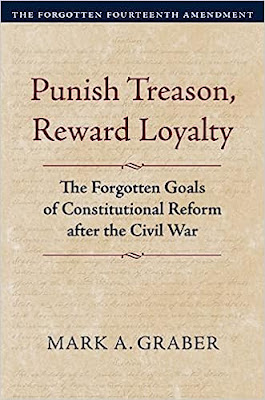
Mark A. Graber, Punish Treason, Reward Loyalty: The Forgotten Goals of Constitutional Reform after the Civil War (University of Kansas Press, 2023)
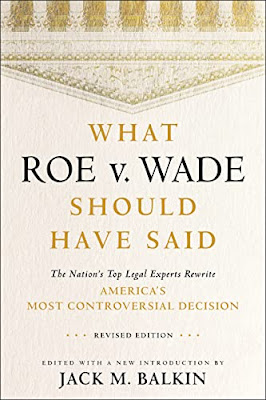
Jack M. Balkin, What Roe v. Wade Should Have Said: The Nation's Top Legal Experts Rewrite America's Most Controversial Decision - Revised Edition (NYU Press, 2023)

Andrew Koppelman, Burning Down the House: How Libertarian Philosophy Was Corrupted by Delusion and Greed (St. Martin’s Press, 2022)

Gerard N. Magliocca, Washington's Heir: The Life of Justice Bushrod Washington (Oxford University Press, 2022)
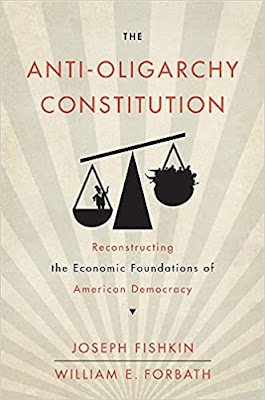
Joseph Fishkin and William E. Forbath, The Anti-Oligarchy Constitution: Reconstructing the Economic Foundations of American Democracy (Harvard University Press, 2022)
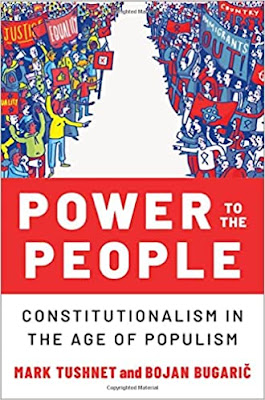
Mark Tushnet and Bojan Bugaric, Power to the People: Constitutionalism in the Age of Populism (Oxford University Press 2021).

Mark Philip Bradley and Mary L. Dudziak, eds., Making the Forever War: Marilyn B. Young on the Culture and Politics of American Militarism Culture and Politics in the Cold War and Beyond (University of Massachusetts Press, 2021).

Jack M. Balkin, What Obergefell v. Hodges Should Have Said: The Nation's Top Legal Experts Rewrite America's Same-Sex Marriage Decision (Yale University Press, 2020)

Frank Pasquale, New Laws of Robotics: Defending Human Expertise in the Age of AI (Belknap Press, 2020)

Jack M. Balkin, The Cycles of Constitutional Time (Oxford University Press, 2020)

Mark Tushnet, Taking Back the Constitution: Activist Judges and the Next Age of American Law (Yale University Press 2020).

Andrew Koppelman, Gay Rights vs. Religious Liberty?: The Unnecessary Conflict (Oxford University Press, 2020)

Ezekiel J Emanuel and Abbe R. Gluck, The Trillion Dollar Revolution: How the Affordable Care Act Transformed Politics, Law, and Health Care in America (PublicAffairs, 2020)

Linda C. McClain, Who's the Bigot?: Learning from Conflicts over Marriage and Civil Rights Law (Oxford University Press, 2020)
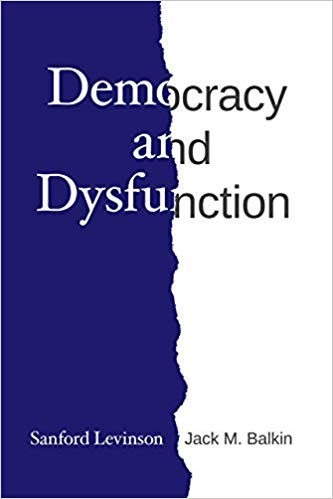
Sanford Levinson and Jack M. Balkin, Democracy and Dysfunction (University of Chicago Press, 2019)

Sanford Levinson, Written in Stone: Public Monuments in Changing Societies (Duke University Press 2018)

Mark A. Graber, Sanford Levinson, and Mark Tushnet, eds., Constitutional Democracy in Crisis? (Oxford University Press 2018)

Gerard Magliocca, The Heart of the Constitution: How the Bill of Rights became the Bill of Rights (Oxford University Press, 2018)

Cynthia Levinson and Sanford Levinson, Fault Lines in the Constitution: The Framers, Their Fights, and the Flaws that Affect Us Today (Peachtree Publishers, 2017)

Brian Z. Tamanaha, A Realistic Theory of Law (Cambridge University Press 2017)

Sanford Levinson, Nullification and Secession in Modern Constitutional Thought (University Press of Kansas 2016)

Sanford Levinson, An Argument Open to All: Reading The Federalist in the 21st Century (Yale University Press 2015)

Stephen M. Griffin, Broken Trust: Dysfunctional Government and Constitutional Reform (University Press of Kansas, 2015)

Frank Pasquale, The Black Box Society: The Secret Algorithms That Control Money and Information (Harvard University Press, 2015)

Bruce Ackerman, We the People, Volume 3: The Civil Rights Revolution (Harvard University Press, 2014)
Balkinization Symposium on We the People, Volume 3: The Civil Rights Revolution

Joseph Fishkin, Bottlenecks: A New Theory of Equal Opportunity (Oxford University Press, 2014)

Mark A. Graber, A New Introduction to American Constitutionalism (Oxford University Press, 2013)

John Mikhail, Elements of Moral Cognition: Rawls' Linguistic Analogy and the Cognitive Science of Moral and Legal Judgment (Cambridge University Press, 2013)

Gerard N. Magliocca, American Founding Son: John Bingham and the Invention of the Fourteenth Amendment (New York University Press, 2013)

Stephen M. Griffin, Long Wars and the Constitution (Harvard University Press, 2013)

Andrew Koppelman, The Tough Luck Constitution and the Assault on Health Care Reform (Oxford University Press, 2013)

James E. Fleming and Linda C. McClain, Ordered Liberty: Rights, Responsibilities, and Virtues (Harvard University Press, 2013)
Balkinization Symposium on Ordered Liberty: Rights, Responsibilities, and Virtues

Andrew Koppelman, Defending American Religious Neutrality (Harvard University Press, 2013)

Brian Z. Tamanaha, Failing Law Schools (University of Chicago Press, 2012)

Sanford Levinson, Framed: America's 51 Constitutions and the Crisis of Governance (Oxford University Press, 2012)

Linda C. McClain and Joanna L. Grossman, Gender Equality: Dimensions of Women's Equal Citizenship (Cambridge University Press, 2012)

Mary Dudziak, War Time: An Idea, Its History, Its Consequences (Oxford University Press, 2012)

Jack M. Balkin, Living Originalism (Harvard University Press, 2011)

Jason Mazzone, Copyfraud and Other Abuses of Intellectual Property Law (Stanford University Press, 2011)

Richard W. Garnett and Andrew Koppelman, First Amendment Stories, (Foundation Press 2011)

Jack M. Balkin, Constitutional Redemption: Political Faith in an Unjust World (Harvard University Press, 2011)

Gerard Magliocca, The Tragedy of William Jennings Bryan: Constitutional Law and the Politics of Backlash (Yale University Press, 2011)

Bernard Harcourt, The Illusion of Free Markets: Punishment and the Myth of Natural Order (Harvard University Press, 2010)

Bruce Ackerman, The Decline and Fall of the American Republic (Harvard University Press, 2010)
Balkinization Symposium on The Decline and Fall of the American Republic

Ian Ayres. Carrots and Sticks: Unlock the Power of Incentives to Get Things Done (Bantam Books, 2010)

Mark Tushnet, Why the Constitution Matters (Yale University Press 2010)
Ian Ayres and Barry Nalebuff: Lifecycle Investing: A New, Safe, and Audacious Way to Improve the Performance of Your Retirement Portfolio (Basic Books, 2010)
.jpg)
Jack M. Balkin, The Laws of Change: I Ching and the Philosophy of Life (2d Edition, Sybil Creek Press 2009)

Brian Z. Tamanaha, Beyond the Formalist-Realist Divide: The Role of Politics in Judging (Princeton University Press 2009)
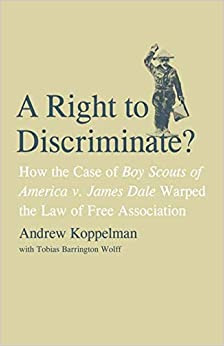
Andrew Koppelman and Tobias Barrington Wolff, A Right to Discriminate?: How the Case of Boy Scouts of America v. James Dale Warped the Law of Free Association (Yale University Press 2009)

Jack M. Balkin and Reva B. Siegel, The Constitution in 2020 (Oxford University Press 2009)
Heather K. Gerken, The Democracy Index: Why Our Election System Is Failing and How to Fix It (Princeton University Press 2009)

Mary Dudziak, Exporting American Dreams: Thurgood Marshall's African Journey (Oxford University Press 2008)

David Luban, Legal Ethics and Human Dignity (Cambridge Univ. Press 2007)

Ian Ayres, Super Crunchers: Why Thinking-By-Numbers is the New Way to be Smart (Bantam 2007)

Jack M. Balkin, James Grimmelmann, Eddan Katz, Nimrod Kozlovski, Shlomit Wagman and Tal Zarsky, eds., Cybercrime: Digital Cops in a Networked Environment (N.Y.U. Press 2007)
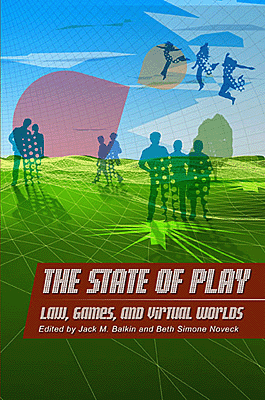
Jack M. Balkin and Beth Simone Noveck, The State of Play: Law, Games, and Virtual Worlds (N.Y.U. Press 2006)

Andrew Koppelman, Same Sex, Different States: When Same-Sex Marriages Cross State Lines (Yale University Press 2006)
Brian Tamanaha, Law as a Means to an End (Cambridge University Press 2006)
Sanford Levinson, Our Undemocratic Constitution (Oxford University Press 2006)
Mark Graber, Dred Scott and the Problem of Constitutional Evil (Cambridge University Press 2006)
Jack M. Balkin, ed., What Roe v. Wade Should Have Said (N.Y.U. Press 2005)
Sanford Levinson, ed., Torture: A Collection (Oxford University Press 2004)
Balkin.com homepage
Bibliography
Conlaw.net
Cultural Software
Writings
Opeds
The Information Society Project
BrownvBoard.com
Useful Links
Syllabi and Exams